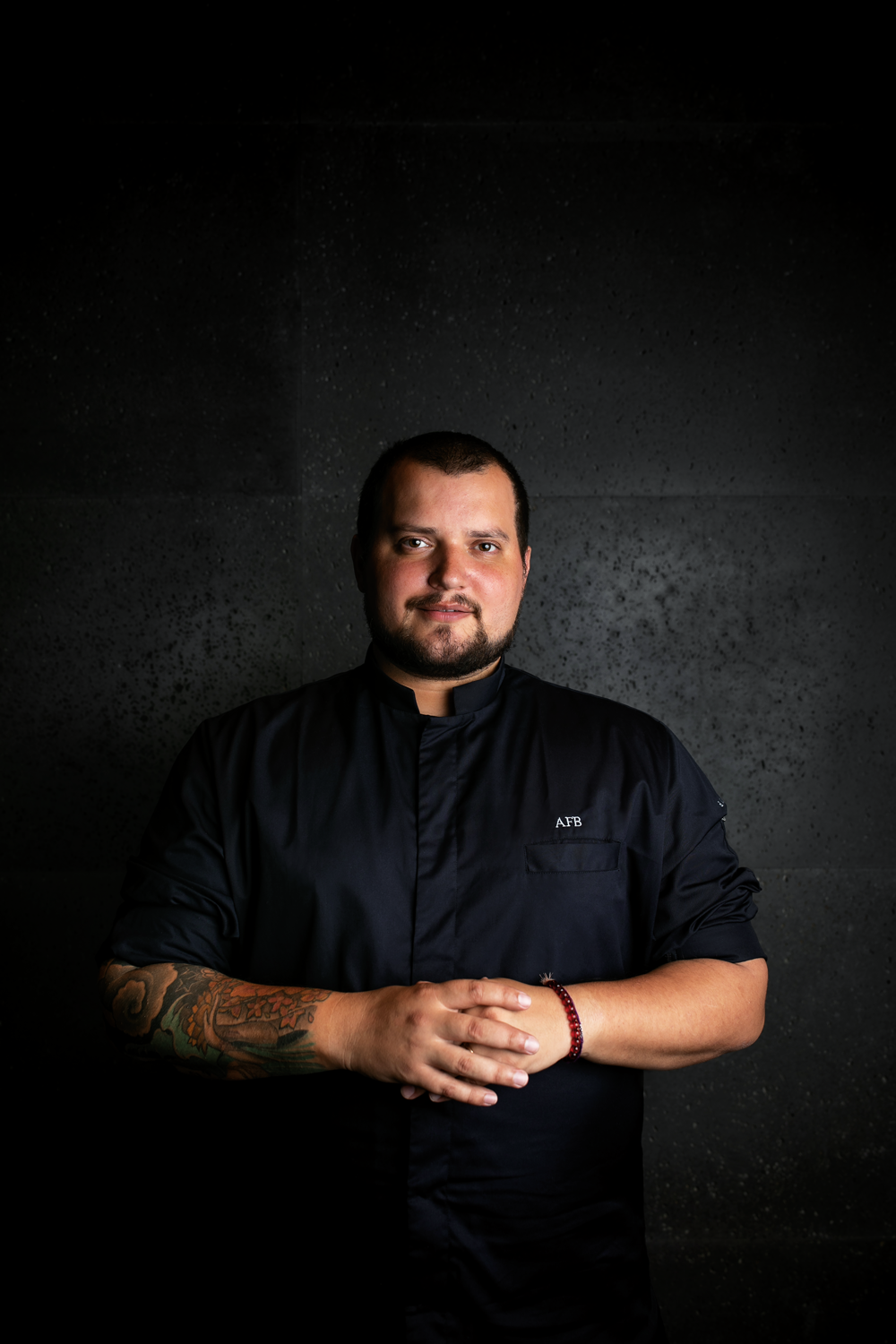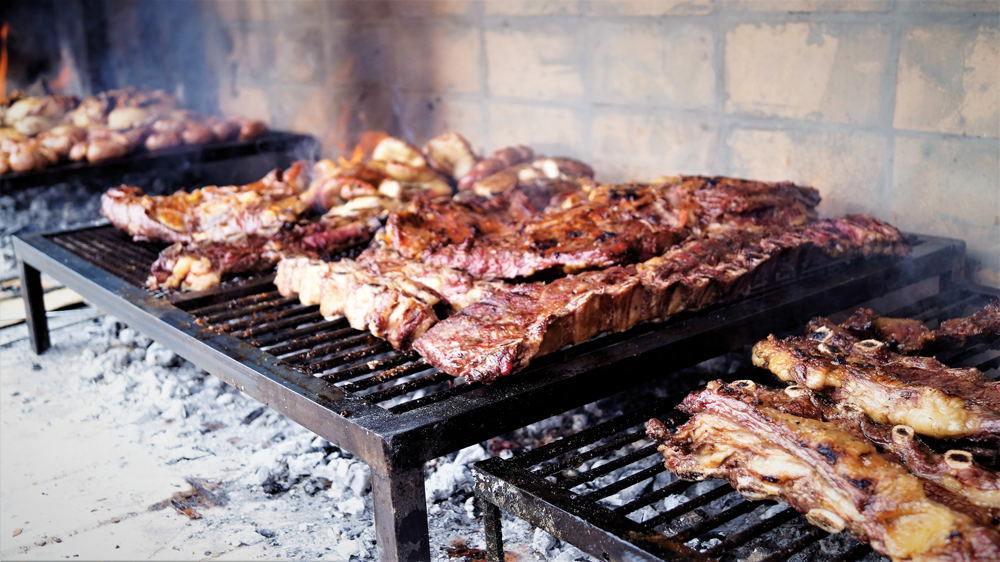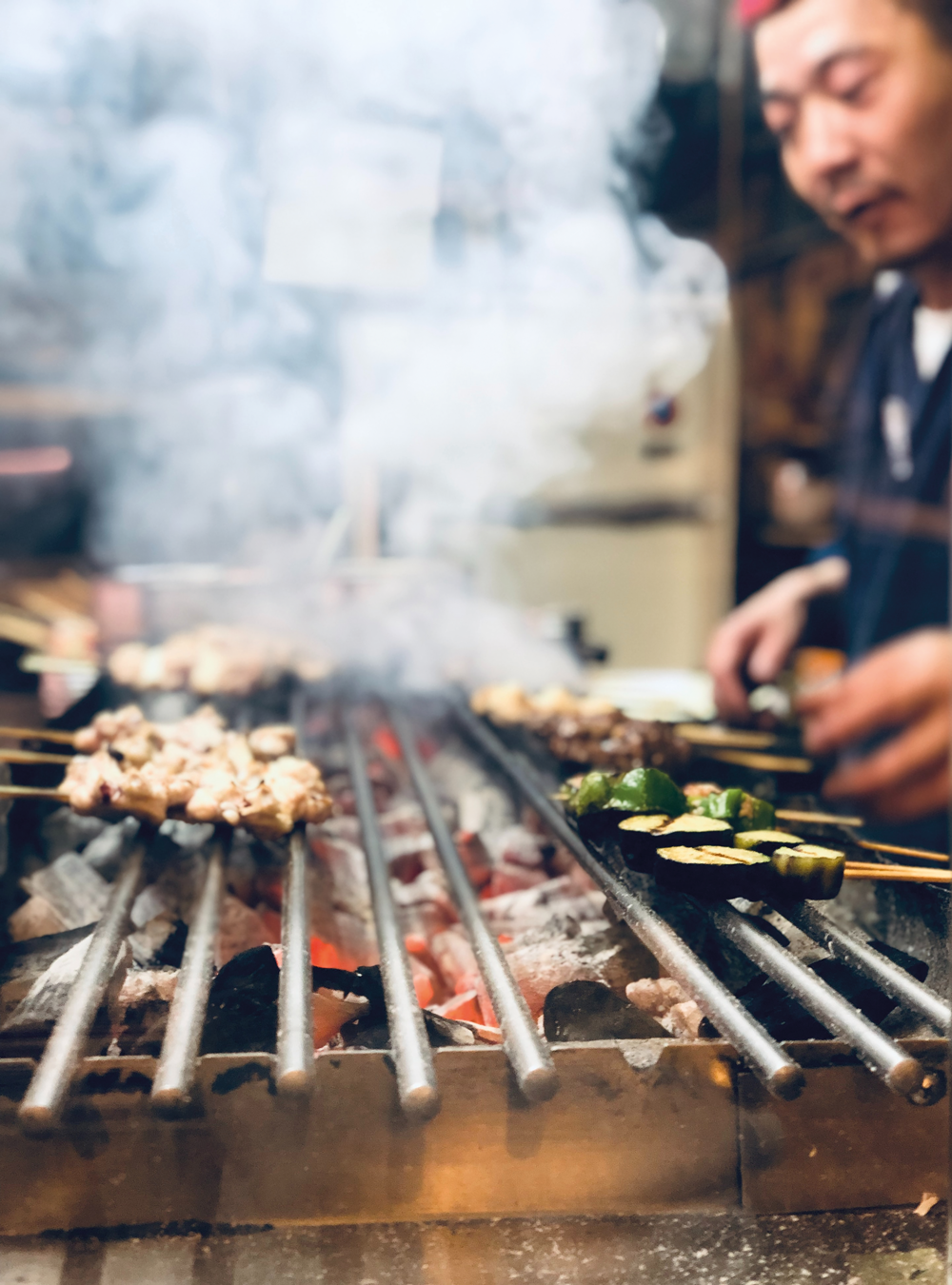Chef Agustin Ferrando Balbi makes his mark by bending genres and blending cultures.

The essence of umami. It was one of the most important lessons in cooking for Chef Agustin Ferrando Balbi. Just as important is the concept of omotenashi, the art of Japanese hospitality. Born into a Spanish and Italian family, Argentinian Chef Balbi took a different path from his culinary counterparts and headed east to Japan when the rest chose to be in traditional European kitchens. It was a calling that proved to be pivotal in developing his personal culinary approach.
Chef Balbi’s culinary philosophy is all about defying labels and bending genres. He aims to unite the rich influences of his experiences in Japan and Argentina in unexpected ways. It was in Japan that he honed his craft at notable restaurants such as two-Michelin-starred Zurriola, three-Michelin-starred Nihonryori Ryugin, and the now-defunct two-Michelin-starred Cuisine[s] Michel Troisgros, earning him the accolade of Top 10 Japan San Pellegrino Young Chefs (Under 30) in 2015. His love for Asian culture is evident, as he met his wife Yoshika in Japan, and he went on to continue his culinary journey in Hong Kong where he helmed culinary operations for the award-winning HAKU, debuted at number 87 on Best Chefs of the World 2019 and was awarded Best Young Talent of the World 2019 by La Liste.
Now coming into his own, Chef Balbi brings his wealth of experience to Andō as Executive Chef and Co-Founder, joining forces with Hong Kong-based hospitality firm, JIA Group, for his first solo restaurant venture. epicure speaks to Chef Balbi to discover his inspirations.
Share with us the culinary influences of your heritage in Spanish and Italian cuisine.
In Argentina we all somehow come from an Italian or Spanish background, so, culturally, the influences are very big in all aspects. Regarding food, I grew up eating my Mallorcan grandmother’s food, and on Sundays, the traditional pastas from my Italian grandfather. All these influences mark you and your palate in a strong way. After all, it’s the flavours you grow up with that are closer to your heart.
What initially led you to Buenos Aires and New Orleans?
Basically curiosity, I wanted to discover how other cultures understood cuisine and their eating habits; how they share a meal; how they prepare it; and how they define hospitality. Having decided to become a chef, I enrolled in The BUE Trainers, the top culinary institution in Buenos Aires. The school then sent me to New Orleans to work at Scott Boswell at Stella. There, I discovered a totally different culinary world - Cajun cuisine. New Orleans historically had a lot of influences from different parts of the world, particularly France, Spain, England and Africa. All of this was mixed together into a very interesting cuisine style, very flavourful with a strong presence.
What were the highlights for you?
I went there with the goal of learning everything that I could from the experience, focusing mainly on the food as well as understanding how people perceived the act of eating in a cultural context and what are their customs. The city was truly amazing. I was impressed by the amount of art that surrounded the city; the musicians were amazing; and the food was unlike anything I had ever tasted.
What was the attraction of Japanese cuisine that drew you to Tokyo?
Argentina is the motherland of asados (grilled meats), and I wanted to learn as much as I could about the techniques and treatments for seafood, and where better to do that than in Japan. It’s the best place for amazing produce and expertise. At the time, my peers were heading to the traditional kitchens in France, Italy and Spain to hone their craft, but I wanted to do something completely different and decided to head east to Japan – despite having never visited it and not knowing a single word of Japanese.

Share with us the Japanese influences that shaped your culinary philosophy and your current approach.
Japan has influenced my cooking in many ways. My experiences in Japan have made my cooking much more refined, lighter and with much more umami. In fact, understanding umami was one of the most important lessons together with the sense of omotenashi, which in short, is the art of Japanese hospitality. I didn’t just learn about cooking, but also about how the cultural aspect of the cuisine is perceived by its natives.
One of the dishes that represent this synergy of Argentinian and Japanese influence is asados. I love to grill A5 Kumamoto wagyu over charcoal, brushed with beef jus and ponzu, and served alongside a purée of corn, bacon and togarashi, charred shishito peppers, and a stuffed shiitake mushroom with a sofrito filling of mushroom feet, zucchini and kombu. Rounding out the dish is a sauce made from beef bones and roasted pequillo peppers.

What culinary styles were the highlights for you and why?
The style of kaiseki cuisine caught my attention. It was very different from everything I had ever seen before. From how the courses were presented and how the kitchen is divided into totally different sections to the handling of raw fish and the different techniques applied to different kinds of fish and meats, everything was so unique.
MY FAVOURITE RESTAURANTS IN HONG KONG
MONO
As the chef is from South America like myself, I can relate to the delicious food very much. It reminds me of home.
L’ENVOL
Chef Oliver Elzer’s exquisite cooking is very elegant and sophisticated. Well worth a visit.
BELON
Chef Daniel Calvert’s food is really nice and delicious; it’s creative and executed with lots of care and attention to detail.
MY FAVOURITE DISHES
Arroz caldoso made by my grandmother Lola; it immediately reminds me of home and it also has a very particular effect of stirring up this sense of generosity and hospitality.
Grilled meat with chimichurri is another dish that bring back memories of friends and laughter. For us Argentinians, it is a dish that is very close to our hearts.
Gnocchi is also one of my favourite foods to eat. It was my grandfather’s best dish. He was really proud of it.
For chef Agustin Ferrando Balbi, Andō is very personal. Derived from his Latin surname Ferrando, Andō in Japanese also connotes a sense of contentment, while in Spanish, it is the equivalent of ‘-ing,’ the verb participle to describe the act of doing in the present. Such complexity and multiplicity in meanings lie at the heart of the Agustin’s cuisine at Andō, one that nods at his ancestral roots in Spain, while gazing at the land that shaped his craft – Japan. “I think we will stand out for our unique cuisine and the interesting journey we offer. We believe that what andō can offer is like nothing else and cannot be easily compared to others since the style is very personal.”
“The most significant dish at Andō is the rice course SIN LOLA (Without Lola), which is an arroz caldoso made with yumepirika rice, clam stock, abalone stock, chicken and chorizo De la Vera. It is very delicious and comforting at the same time, it is also a very personal homage to my grandmother, Lola, who inspired me to pursue this culinary path.”
